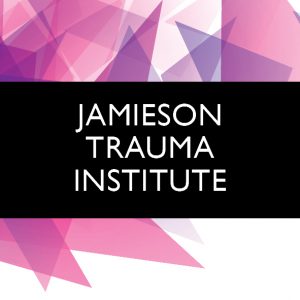Our Projects
Chief Investigators: Dr Matthew Hope, A/Prof Cate Cameron, Ms Jace Warren, A/Prof Kirsten Vallmuur, A/Prof Kevin Tetsworth, Dr Andrew Mayo, A/Prof Cliff Pollard
This data linkage study aims to examine the clinical and economic impact of pelvic and lower extremity fractures from land transport crashes in Queensland. Pelvic and lower limb fractures, particularly from motor vehicle crashes, make up a significant proportion of the orthopaedic workload in acute care, however little is currently known on a state-wide basis about the true cost and long-term resource burden from these injuries. This study will examine all pelvic and lower limb fracture cases from land transport crashes across Queensland over a five-year period. By using data linkage and obtaining all readmissions to any hospital, both planned and unplanned, ongoing treatment as well as complications will be captured in the 12-month period following an original injury event. This study will enable a comprehensive cost and resource burden analysis for this trauma population as well as inform the Queensland Health Trauma Data Warehouse development around data linkage techniques and case identification for determining readmissions in trauma data.
This project will firstly examine the quality of the injury data collected by a range of service providers and data sources including prehospital, retrieval, emergency, admitted patients, ICU, and injury deaths. Secondly, the study aims to examine the pattern, trends and cost of injury in Queensland over the last five years by analyzing all the trauma data sources to get a more complete picture of the true burden of injury. The findings will help inform the development of the Queensland Health Trauma Data Warehouse by identifying the most appropriate, high-quality data fields to include in the warehouse as well as demonstrating the value of the data for describing the trauma burden in Queensland.
JTI is collaborating with the QUT Information Systems, Business Process Management department (who are leading the project) along with Retrieval Services Queensland and Queensland Ambulance Service to examine pre-hospital retrieval pathways for road trauma patients across the State. This is project uses business process analytics to collate very detailed organisational data to uncover process flows and look at relationships between retrieval pathways and processes and patient outcomes. In doing this, we aim to understand the range of different care and delivery processes undertaken for road trauma patients from roadside to definitive care for regional vs urban-metropolitan road crashes. In addition, by examining very detailed time and event data from RSQ and QAS, we aim to compare actual processes and destinations with desirable processes and destinations and identify factors influencing deviations from preferred protocols and the effect on patient outcomes. This study will assist in identifying potential areas for service enhancement across the state.
Having a measure of injury severity is a fundamental factor to include in predictive modelling of outcomes of trauma patients. Currently, the only severity scores in Queensland are for cases manually coded by four trauma registries, which have restrictive criteria for inclusion and therefore reflect only a fraction of the total trauma cases across the state. It is also not feasible or sustainable to manually score all state-wide injury data. This study will compare the strength of mortality prediction of three injury severity estimates [Injury Severity Score (ISS), ICD-10-AM-based Injury Severity Score (ICISS) and Trauma Mortality Prediction Model (TMPM)] using hospital administrative data (from which ICISS and TMPM can be calculated) for a trauma registry-based population with ISS-coded data. This will be used to identify the best algorithms for automating severity scoring using ICD coded data and develop recommendations regarding future use of injury severity estimation models in Queensland.
Chief Investigators: A/Prof Cate Cameron, Ms Jace Warren, Prof Michael Muller, Prof Michael Rudd
The last epidemiological review of adult burn injuries in Queensland was undertaken 15 years ago. The aim of this project was to review the current data to describe the number of admissions, demographics, injury, acute treatment factors and acute care outcomes of adult burn patients admitted to the Professor Stuart Pegg Adult Burns Centre at Royal Brisbane and Women’s Hospital (RBWH Burns Centre) between 2008 and 2017. Given that the treatment of severe burns is often expensive, complex, and resource intensive, it is important to understand the current trends in the type of patients referred to RBWH Burns Centre, and to use this information to maintain and plan for a sustainable and effective burns service for Queenslanders. Current data is also needed to establish a base for assessing the impact of new treatments and initiatives, such as the establishment of the Skin Culture Centre and the introduction of the National Injury Insurance Scheme Queensland (NIISQ).
In isolated traumatic brain injury (TBI), there is a golden four hour rule for time to specialist care as opposed to the golden one hour for all other forms of trauma. While there is good evidence that patients with TBI benefit from specialist neurosurgical care, there has been limited findings to support what the best time frames are for receiving this care and whether the four hour rule is valid. This is particularly relevant in Queensland with its vast geography and the distances to access specialist services. This study includes five years of RBWH-ICU cases with isolated severe TBI to examine time from injury event to definitive neurosurgical care, contributing retrieval factors and subsequent effect on mortality and functional outcomes. The aim was to examine the effect of time from initial injury to arrival at definitive care/treatment on patient morbidity and mortality following isolated TBI, and to identify realistic time frames for both civilian and military retrieval systems.

